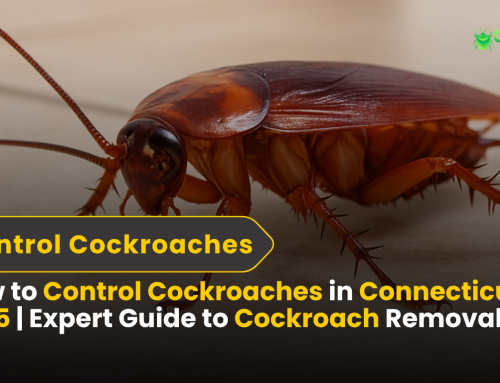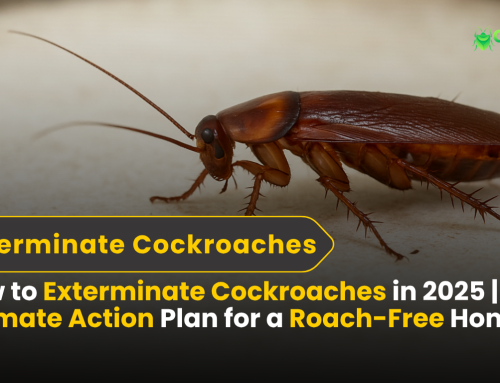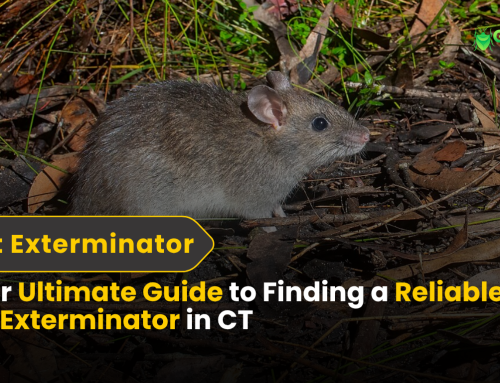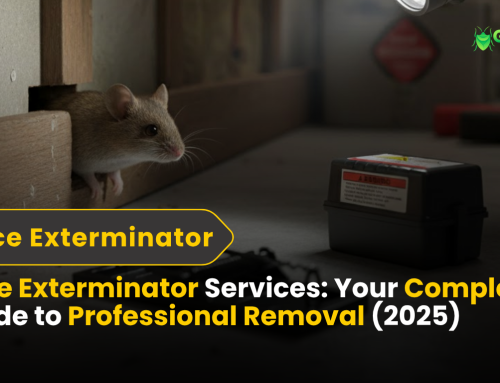How to Get Rid of Sugar Ants In 2025: A Complete Guide
Sugar ants ,also known as odorous house ants, are tiny, small sized pests that are consider notorious for invading homes in search of sweet treats. While they are not very much harmful to humans but their presence can be a nuisance and even a potential hygiene issue in the whole environment.Well if you are facing the same issue and trying yourself to battling with these pesky intruders ,This guide will walk you through everything you need to knwo to eliminate the effect of sugar ants and prevent them from returning again.
1. Understanding The Misconception About The Sugar Ants
Before dealing with the issue, it’s important to understand the misconceptions about the sugar ants and their natural habit.
What Are Sugar Ants?
Before knowing the sugar ants its better to know that sugar ants are not similar to carpenter ants.Sugar ants are a common term for a variety of ants species that are attracted to sugary substances.The most common type found in homes is the odorous house ant, named for the unpleasant smell they emit when crushed.These ants are typically small, raning from 2 to 3 milimeters in length, and are either black or brown.
Why Do They Invade Homes?
Sugar ants are opportunistic feeders. They enter homes in search of food, particularly sweet or carbohydrate-rich substances. Once they locate a food sources, they release pheromones to guide other ants to the treasure, leading to an infestation. They also seek out water sources, making kitchens and bathrooms common areas for activity.
2. Identifying the Problem Of Sugary Ants:
Signs of a sugar ants infestation
- Visible Trails: You might notice lines of ants marching to and from food sources.
- Food Contamination: Rid of sugar ants are drawn to crumbs, spills, and open food containers.
- Nests: While sugar ants generally nest outdoors, they may se up satellite, colonies inside your home, particularly in walls or under floors.
Common Entry Points
- Cracks in walls and floors
- Open doors and windows
- Gaps around plumbing or electrical fixtures
- Vents or poorly sealed utility lines
Identifying these entry points is very critical to addressing the infestation effectively.
3. Immediate Steps to Control Sugar Ants
Cleaning up the all food sources
One of the most effective ways to discourage sugar ants is by removing their food sources. Here’s how:
- Wipe Surfaces: Clean kitchen counters, dining tables, and floors regularly to remove crumbs and spills. Use a disinfectant spray to ensure no residue is left behind.
- Seal Food: store food in airtight containers, especially sugary and carbohydrate-rich items like cereal, cookies, and candy.
- Empty Trash: Dispose of garbage daily, and keep trash bins sealed, wash the bins regularly to remove any residue.
- Pet Food Management: Store pet food in sealed containers and avoid leaving it out overnight.
Locate and Block Entry Points
Inspects all your home gaps, crack and other potential entryways. Focus on areas like::
- Baseboards and floorboards
- Around windows and doors
- Utility lines and vents
Use caulk or weather stripping to seal these openings. This not only keeps ants put but also prevents othe pest from entering.
Set Up Ant Baits
Ant baits ae one of the most effective method inorder to eliminate sugar ants. These baits attract the ants, who then carry the poisoned food back to their colony, killing others in the process.
- Choose Sweet Baits: Sugar ants are particularly drawn to sweet-based baits. Look for commercial products labeled specifically for ants.
- Place Strategically: Set the baits near trails, entry points, or areas with high ant activity for maximum effectiveness.
- Monitor and Replace: Check the baits regularly and replace them if they become empty or ineffective.
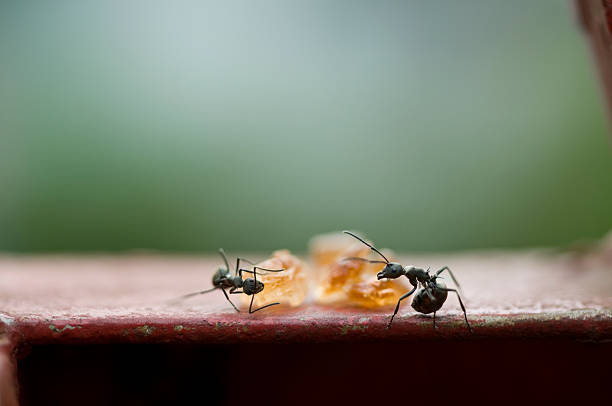
4. Natural Remedies for Sugar Ants
If you prefer eco-friendly solutions, several natural remedies can help you combat sugar ants effectively.
1. Vinegar Solution
Mix equal parts of white vinegar and water in a spray bottle. Spray the solution along ant trails, entry points, and around your kitchen. The strong smell disrupts their pheromone trails, making it harder for them to navigate.
2. Lemon Juice
Like vinegar, lemon juice can deter sugar ants by erasing their scent trails. Squeeze fresh lemon juice around windowsills, doorways, and cracks. You can also mix lemon juice with water and spray it in problem areas.
3. Baking Soda and Sugar
Create a homemade bait by mixing equal parts baking soda and powdered sugar. Place small amounts near ant trails. The sugar attracts the ants, while the baking soda disrupts their digestive system, effectively killing them.
4. Essential Oils
Various essential oils, such as peppermint, tea tree, and eucalyptus, are natural ant repellents. Dilute a few drops in water and spray around your home, focusing on entry points and ant trails. Alternatively, rid of sugar ants soak cotton balls in the essential oil mixture and place them strategically.
5. Diatomaceous Earth
Food grade diatomaceous earth is a non-toxic powder that kills ants by dehydrating them. Sprinkle it along ant trails and entry points. Be sure to reapply after cleaning or if it gets wet.
6. Cinnamon
Cinnamon can act as a natural repellent. Sprinkle ground cinnamon near entry points or create a paste with water for a stronger barrier.
5. Chemical Solutions
If natural remedies are not work properly, various chemical treatments can provide a more aggressive approach. However, use these solutions carefully and according to the manufacturer’s instructions.
1. Ant Sprays
Commercial ant sprays can kill ants on contact and create a barrier around your home. Look for sprays that are safe for indoor use. Avoid over-spraying as it can be harmful to pets and humans.
2. Granular Ant Baits
Granular baits work similarly to liquid baits but are rid of sugar ants effective for outdoor use. Spread them around the perimeter of your home to target outdoor colonies. This helps to reduce the number of ants entering your home.
3. Insecticides
Residual insecticides can be applied around entry points and potential nesting sites. These products provide long-lasting protection but should be used sparingly to avoid health risks.
6. Long-Term Prevention
Eliminating sugar ants is only half the battle. To prevent future infestations, follow these preventive measures consistently.
Maintain a Clean Home
- Sweep and mop floors regularly to remove food debris.
- Clean up spills and crumbs immediately.
- Wash dishes promptly, and avoid leaving dirty dishes in the sink overnight.
Store Food Properly
- Use airtight containers for pantry items like flour, sugar, and cereal.
- Avoid leaving fruits and other perishable items out in the open.
Seal Entry Points
Inspect your overall home regularly for cracks, gaps and other potential entryways. Seal them with caulk or weather stripping to block access.
Trim Vegetation
Sugar ants often use branches and shrubs as bridges to your home. Keep vegetation trimmed and away from your house. Consider creating a barrier of gravel or stone around the perimeter of your home.
Regular Pest Control
Consider scheduling regular pest control inspections to identify and address potential problems before they become infestations. Professional treatments can provide added protection against pests.
7. When to Call a Professional
If your efforts to eliminate sugar ats have been unsuccessful or the infestation is move to in very severe condition then its the best time to a pest control management service company so their professionals control the amount of pests:
- Identify the specific species of ants.
- Locate and eliminate nests, including those hidden inside walls or under floors.
- Apply advanced treatments for long-term prevention.
Professional services are particularly helpful if you’re dealing with multiple ant species or a recurring problem.
8. Frequently Asked Questions
Q: Are sugar ants dangerous?
A: Sugar ants are not harmful to humans, but they can contaminate food and surfaces, leading to hygiene concerns.
Q: Can sugar ants damage my home?
A: Unlike carpenter ants, sugar ants do not cause structural damage. However, their presence can be an annoyance and a sign of potential sanitation issues.
Q: How long does it take to get rid of sugar ants?
A: The time required depends on the severity of the infestation. Minor issues can often be resolved rid of sugar ants within a few days, while severe infestations may take weeks or require professional intervention.
Conclusion
Disposing of sugar subterranean insects requires a mix of quick activity, regular or synthetic medicines, and long haul counteraction. By figuring out their propensities, killing their food sources, and fixing their entrance focuses, you can recover your home from these steady vermin. Whether you pick strategies for rid of sugar ants or expert assistance, remaining proactive is the way to keeping your home subterranean insect free.
Keep in mind, consistency is pivotal. Indeed, even subsequent to killing a pervasion, ordinary cleaning and support will assist with guaranteeing that sugar subterranean insects don’t return. With tirelessness and the techniques illustrated in this aide, you can partake in a bug free home for quite a long time into the future.

